Deriving Urban Boundaries of Henan Province, China, Based on Sentinel-2 and Deep Learning Methods
Abstract
:1. Introduction
2. Data Sources and Preprocessing
2.1. Study Area
2.2. Research Data
2.3. Data Preprocessing
3. Methods and Technical Route
3.1. Defining City Boundaries
3.2. Determination and Delimitation of Objectives
3.3. Principles of Urban Boundary Delimitation
- (1)
- The principle of administrative divisions. The intention was to delimit urban boundaries within each administrative region.
- (2)
- The principle of urban boundary direction. When sketching an urban boundary, priority was given to sketching linear features such as roads and rivers, and it was forbidden to cross houses, residential areas, large structures, parks, green spaces, sites under construction, farmland, forest land, or other large features. This involved drawing along the boundary of block features in areas without obvious linear features.
- (3)
- The principle of centralized connection. As a whole, the concentrated contiguous area was divided into the interior of the urban boundary. Where the block features were separated by small areas of agricultural land or non-construction land, this part of the partition plot was included in the interior of the urban area to keep the whole city a centralized and contiguous area.
- (4)
- The principle of judging urban landscape. The aim was to judge whether ground objects belonged to the urban area according to the urban landscape. The urban landscape within the urban boundary mainly included housing construction areas, structures, urban roads, urban squares, parks, parking lots, stadiums, urban green spaces, urban waters, etc. [40,41].
- (5)
- The principle of judging the enclaved urban area. In the process of urbanization, urban plots may have become spatially disconnected from the central urban area but remain functionally connected with the central city. Their characteristics are (a) they are connected with the urban regional center through trunk roads; (b) they have obvious urban landscape characteristics; and (c) the administrative departments, residential areas, large communities, colleges and universities, scientific research institutions, high-tech development zones, industrial and mining land, and other special areas are located in large, concentrated areas.
- (6)
- The principle of connecting adjacent urban areas. Where urban spatial integration was observed to connect adjacent cities, it was divided between the two main urban areas along lines according to the connectivity of roads, urban buildings, and rivers and water bodies.
- (7)
- The principle of farmland differentiation. A large area of regular farmland can be used as an important marker to distinguish urban and nonurban areas. Generally, the internal promotion was carried out with a piece of regular farmland as the bottom line to find the urban boundary line. No urban landscape within 50 hectares of regular farmland boundary was divided into nonurban areas.
3.4. Urban Boundary Delimitation Steps
3.4.1. Determination of Urban Points and Delimitation of Urban Units
3.4.2. Initial Delimitation of Urban Boundaries
3.4.3. Urban Boundary Inspection and Correction
3.4.4. Accuracy Evaluation and Applicability Analysis
4. Results and Discussion
4.1. City Boundary Delimitation Results
4.2. Precision Evaluation and Comparison of the Urban Boundary Results
4.3. Discussion of Urban Boundary Datasets
4.4. Applicability of the Data Sets in Deep-Learning Classification
5. Conclusions
Author Contributions
Funding
Data Availability Statement
Acknowledgments
Conflicts of Interest
References
- Xu, Z.; Gao, X. Boundary Recognition Method of Urban Built-up Area Based on Interest Points of Electronic Map. J. Geogr. 2016, 71, 928–939. [Google Scholar]
- Zhang, H.; Ning, X.; Wang, H.; Shao, Z. High Precision Expansion Monitoring and Analysis of Chinese Provincial Capital Cities from 2000 to 2015 Based on High-Resolution Remote Sensing Images. J. Geogr. 2018, 73, 2345–2363. [Google Scholar]
- Xu, K.; Wu, S.; Chen, D.; Dai, L.; Zhou, S. Determination of Urban Growth Boundary Based on Hydrological Effect—A Case Study of Xinminzhou, Zhenjiang. Geoscience 2013, 33, 979–985. [Google Scholar]
- Liang, X.; Liu, X.; Li, X.; Chen, Y.; Tian, H.; Yao, Y. Delineating Multi-Scenario Urban Growth Boundaries with a CA-Based FLUS Model and Morphological Method. Landsc. Urban Plan. 2018, 177, 47–63. [Google Scholar] [CrossRef]
- Li, X.; Cong, X.; Tong, L.; Cheng, Z. The Defining Method and Application of Urban Boundary. Urban Probl. 2017, 2, 46–51. [Google Scholar]
- Chow, W.T.L. The Impact of Weather Extremes on Urban Resilience to Hydro-Climate Hazards: A Singapore Case Study. Int. J. Water Resour. Dev. 2018, 34, 510–524. [Google Scholar] [CrossRef] [Green Version]
- Xia, N.; Cheng, L.; Li, M.C. Mapping Urban Areas Using a Combination of Remote Sensing and Geolocation Data. Remote Sens. 2019, 11, 1470. [Google Scholar] [CrossRef] [Green Version]
- Duan, Y.; Liu, Y.; Liu, X. Wang Honglei Multi Center Identification of Chongqing Main Urban Area Based on POI Big Data. J. Nat. Resour. 2018, 33, 788–800. [Google Scholar]
- Xiao, C.; Zhang, L. Research on Comparison and Selection Methods of Remote Sensing Data Sources for Geographic National Conditions Monitoring. Bull. Surv. Mapp. 2019, 8, 116–120. [Google Scholar]
- Li, H.; Liu, Y.; Tan, R.; Qiu, L. A New Algorithm of Urban Built-up Area Boundary Extraction Based on High-Resolution Panchromatic Image. Bull. Surv. Mapp. 2015, 7, 36–41. [Google Scholar]
- Wu, X.; Zhang, P. Urban Boundary Extraction Based on Dmsp-Ols and Landsat Images. J. Appl. Sci. 2016, 34, 67–74. [Google Scholar]
- Kumari, N.; Srivastava, A.; Dumka, U.C. A Long-Term Spatiotemporal Analysis of Vegetation Greenness over the Himalayan Region Using Google Earth Engine. Climate 2021, 9, 109. [Google Scholar] [CrossRef]
- Friedl, M.; Mciver, D.; Hodges, J. Global Land Cover Mapping from MODIS: Algorithms and Early Results. Remote Sens. Environ. 2002, 83, 287–302. [Google Scholar] [CrossRef]
- Wan, B.; Guo, Q.; Fang, F. Mapping US Urban Extents from MODIS Data Using One-Class Classification Method. Remote Sens. 2015, 7, 10143–10163. [Google Scholar] [CrossRef] [Green Version]
- Bagan, H.; Yamagata, Y. Landsat Analysis of Urban Growth: How Tokyo Became the World’s Largest Megacity during the Last 40 Years. Remote Sens. Environ. 2012, 127, 210–222. [Google Scholar] [CrossRef]
- Guindon, B.; Zhang, Y.; Dillabaugh, C. Landsat Urban Mapping Based on a Combined Spectral-Spatial Methodology. Remote Sens. Environ. 2004, 92, 218–232. [Google Scholar] [CrossRef]
- Gao, F.; De Colstoun, E.B.; Ma, R. Mapping Impervious Surface Expansion Using Medium-Resolution Satellite Image Time Series: A Case Study in the Yangtze River Delta, China. Int. J. Remote Sens. 2012, 33, 7609–7628. [Google Scholar] [CrossRef]
- Sun, Z.; Wang, C.; Guo, H. A Modified Normalized Difference Impervious Surface Index (MNDISI) for Automatic Urban Mapping from Landsat Imagery. Remote Sens. 2017, 9, 942. [Google Scholar] [CrossRef] [Green Version]
- Zhou, Y.; Smith, S.; Zhao, K. A Global Map of Urban Extent from Nightlights. Environ. Res. Lett. 2015, 10, 054011. [Google Scholar] [CrossRef]
- Huang, X.; Schneider, A.; Friedl, M. Mapping Sub-Pixel Urban Expansion in China Using MODIS and DMSP/OLS Nighttime Lights. Remote Sens. Environ. 2016, 175, 92–108. [Google Scholar] [CrossRef]
- Imhoff, M.; Lawrence, W.; Stutzer, D. A Technique for Using Composite DMSP/OLS “City Lights” Satellite Data to Map Urban Area. Remote Sens. Environ. 1997, 61, 361–370. [Google Scholar] [CrossRef]
- Li, J.; Gong, J.; Yang, J. Urban Spatial Pattern Evolution of Wuhan City Based on Night Light. Remote Sens. Inf. 2017, 32, 133–141. [Google Scholar]
- Guo, Z.; Du, S.; Zhang, F. Extraction of Urban Construction Area Based on High-Resolution Remote Sensing Image. J. Peking Univ. Nat. Sci. Ed. 2013, 635–642. [Google Scholar] [CrossRef]
- Hofmann, P. Detecting informal settlements from IKONOS image data using methods of object oriented image analysis—An example from Cape Town (South Africa). In Remote Sensing of Urban Areas/Fernerkundung in Urbanen Räumen; 2001; Available online: https://intranet.ifs.ifsuldeminas.edu.br/joao.tavares/Material_Cadastro_e_Loteamento/CadastroTecnicoMultifinalitario%20-%209EAC/Material%20auxiliar/kapstadt%5B1%5D.pdf (accessed on 8 May 2022).
- Zheng, K.; Wang, H.; Qin, F.; Han, Z. A Land Use Classification Model Based on Conditional Random Fields and Attention Mechanism Convolutional Networks. Remote Sens. 2022, 14, 2688. [Google Scholar] [CrossRef]
- Wang, Z.; Wang, H.; Qin, F.; Han, Z.; Miao, C. Mapping an Urban Boundary Based on Multi-Temporal Sentinel-2 and POI Data: A Case Study of Zhengzhou City. Remote Sens. 2020, 12, 4103. [Google Scholar] [CrossRef]
- Mnih, V.; Hinton, G. Learning to Detect Roads in High-Resolution Aerial Images. In Computer Vision—ECCV 2010. Lecture Notes in Computer Science; Daniilidis, K., Maragos, P., Paragios, N., Eds.; Springer: Berlin, Germany, 2010; Volume 6316. [Google Scholar]
- Meng, X.; Zhang, S.; Zang, S. Remote Sensing Classification of Wetland Community Based on Convolutional Neural Network and High-Resolution Image—Taking Honghe Wetland as an Example. Geogr. Sci. 2018, 38, 1914–1923. [Google Scholar]
- Cao, L.; Li, H.; Han, Y. Application of Convolution Neural Network in High Score Remote Sensing Image Classification. Surv. Mapp. Sci. 2016, 41, 170–175. [Google Scholar]
- Luo, J.; Li, M.; Zheng, Z. Hyperspectral Remote Sensing Image Classification Based on Depth Convolution Neural Network. J. Xihua Univ. Nat. Sci. Ed. 2017, 36, 13–20. [Google Scholar]
- Zhang, C.; Pan, X.; Li, H.; Gardiner, A.; Sargent, I.; Hare, J.; Atkinson, P.M. A hybrid MLP-CNN Classi- Fier for Very Fine Resolution Remotely Sensed Image Classification. ISPRS J. Photogramm. Remote Sens. 2017, 7, 139–149. [Google Scholar]
- Feng, L. Research on Construction Land Information Extraction from High-Resolution Remote Sensing Images Based on Deep Learning Technology. Master’s Thesis, Zhejiang University, Hangzhou, China, 2017. [Google Scholar]
- Wang, H.; Liu, Y.; Ning, X.; Zhang, H. Research Progress of Remote Sensing Extraction of Urban Boundary. Surv. Mapp. Sci. 2019, 44, 159–165. [Google Scholar]
- National Bureau of Statistics of China. Bulletin of the Seventh National Census (No. 7)—Urban and Rural Population and Floating Population. China Natl. Bur. Stat. 2021, 5, 13. [Google Scholar]
- Ronneberger, O.; Fischer, P.; Brox, T. U-Net: Convolutional Networks for Biomedical Image Segmentation. In Medical Image Computing and Computer-Assisted Intervention—MICCAI 2015. Lecture Notes in Computer Science; Navab, N., Hornegger, J., Wells, W., Frangi, A., Eds.; Springer: Cham, Switzerland, 2015; Volume 9351. [Google Scholar]
- Chaurasia, A.; Culurciello, E.L. Exploiting encoder representations for efficient semantic segmentation. In Proceedings of the 2017 IEEE Visual Communications and Image Processing (VCIP), St. Petersburg, FL, USA, 10–13 December 2017; pp. 1–4. [Google Scholar]
- Lin, T.; Dollar, P.; Girshick, R. Feature Pyramid Networks for Object Detection. In Proceedings of the IEEE Conference on Computer Vision and Pattern Recognition (CVPR), Honolulu, HI, USA, 21–26 July 2017; pp. 936–944. [Google Scholar]
- Schneider, A.; Friedl, M.; Potere, D. A New Map of Global Urban Extent from MODIS Satellite Data. Environ. Res. Lett. 2009, 4, 44003–44011. [Google Scholar] [CrossRef] [Green Version]
- Wang, L.; Li, C.; Ying, Q.; Cheng, X.; Wang, X.; Li, X.; Hu, M.; Liang, L.; Yu, L.; Huang, H.; et al. Satellite Remote Sensing Mapping of Urban Expansion in China from 1990 to 2010. Sci. Bull. 2012, 57, 1388–1403. [Google Scholar]
- Gong, P.; Howarth, P. Land-Use Classification of SPOT HRV Data Using a Cover-Frequency Method. Int. J. Remote Sens. 1992, 13, 1459–1471. [Google Scholar] [CrossRef]
- Lu, D.; Weng, Q. A Survey of Image Classification Methods and Techniques for Improving Classification Performance. Int. J. Remote Sens. 2007, 28, 823–870. [Google Scholar] [CrossRef]
- Li, X.; Gong, P.; Zhou, Y. Mapping Global Urban Boundaries from the Global Artificial Impervious Area (GAIA) Data. Environ. Res. Lett. 2020, 15, 094044. [Google Scholar] [CrossRef]
- Gong, P.; Li, X.; Wang, J. Annual Maps of Global Artificial Impervious Area (GAIA) between 1985 and 2018. Remote Sens. Environ. 2020, 236, 111510. [Google Scholar] [CrossRef]
- Osco, L.P.; Junior, J.M.; Ramos, A.P.M.; Furuya, D.E.G.; Santana, D.C.; Teodoro, L.P.R.; Gonçalves, W.N.; Baio, F.H.R.; Pistori, H.; Junior, C.A.D.S.; et al. Leaf Nitrogen Concentration and Plant Height Prediction for Maize Using UAV-Based Multispectral Imagery and Machine Learning Techniques. Remote Sens. 2020, 12, 3237. [Google Scholar] [CrossRef]
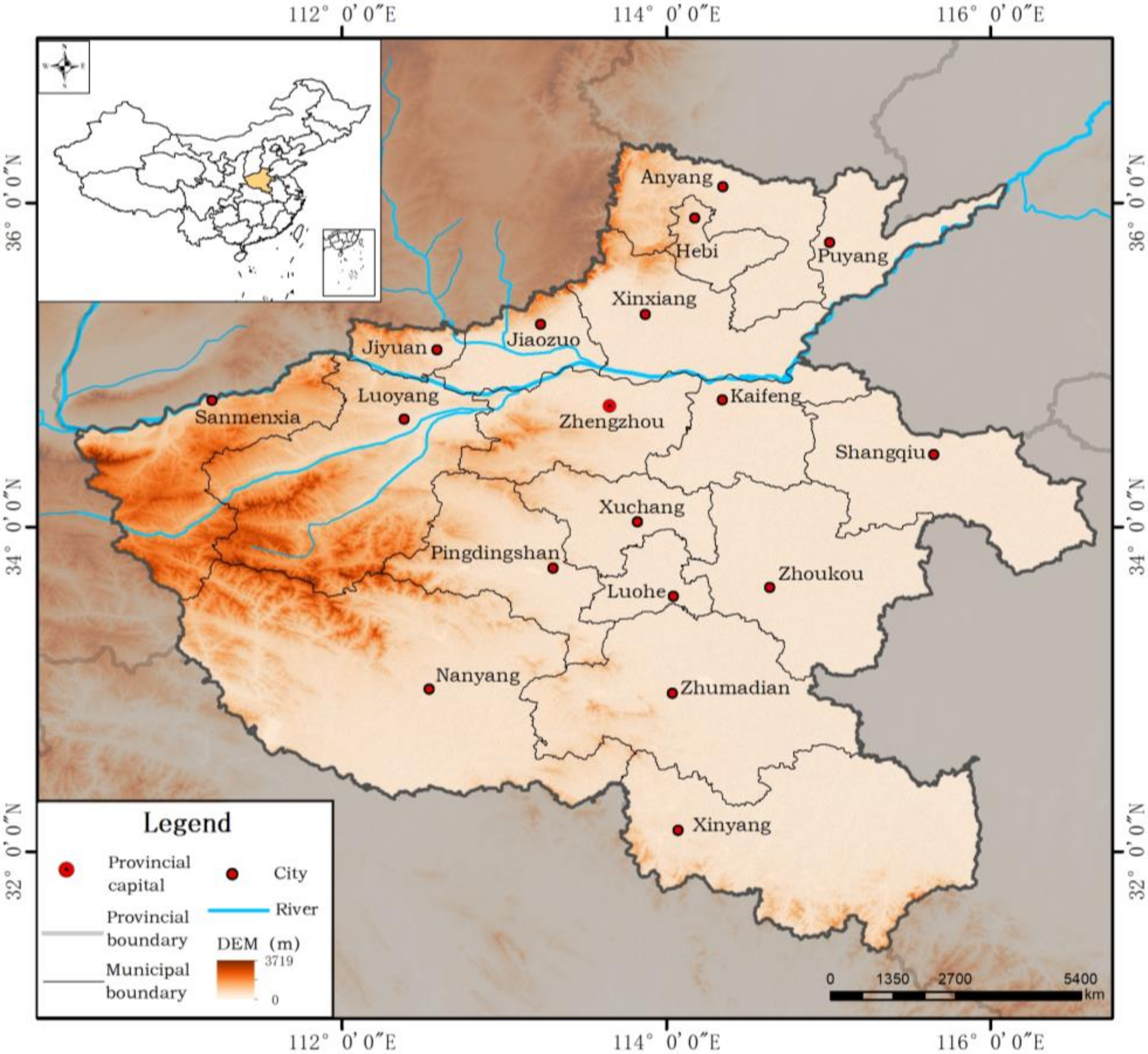
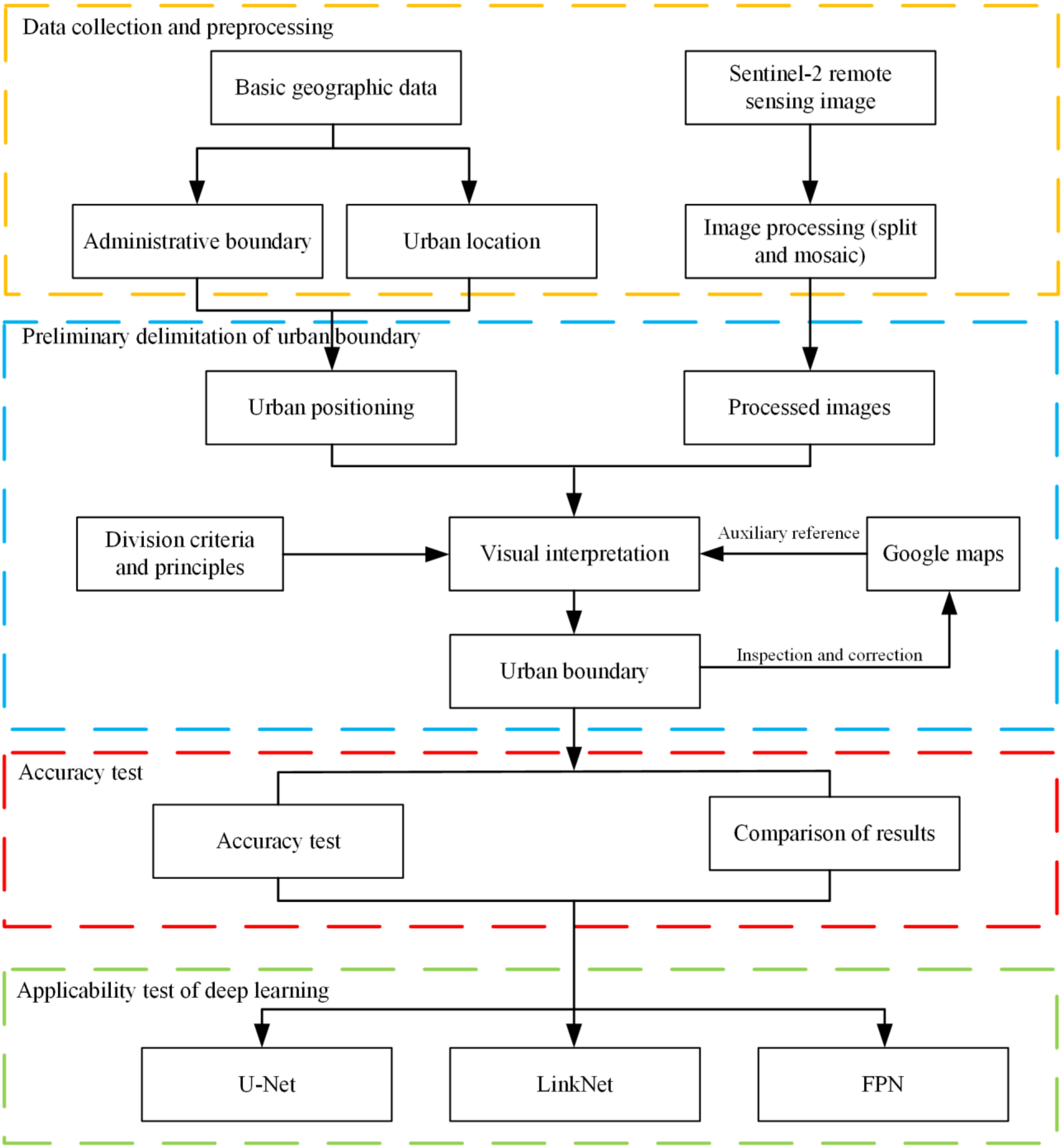


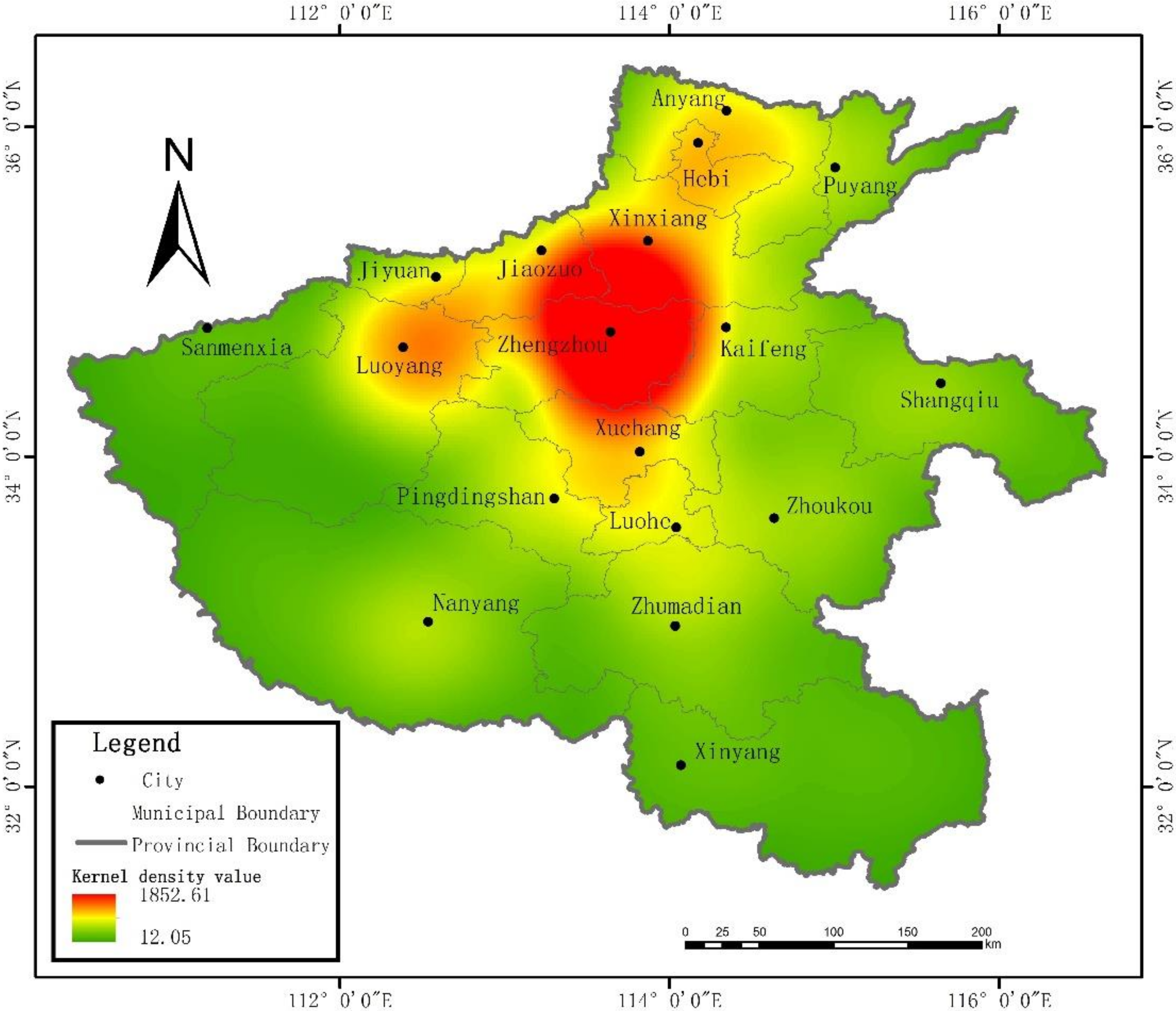
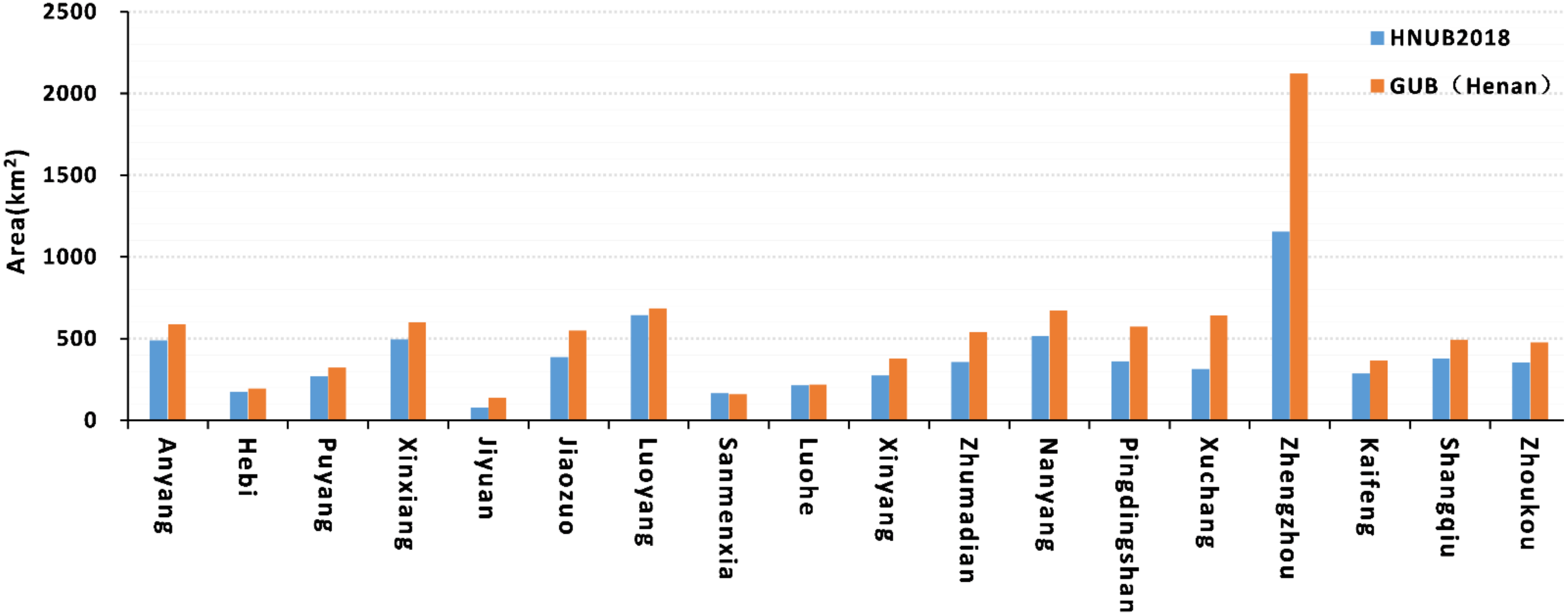
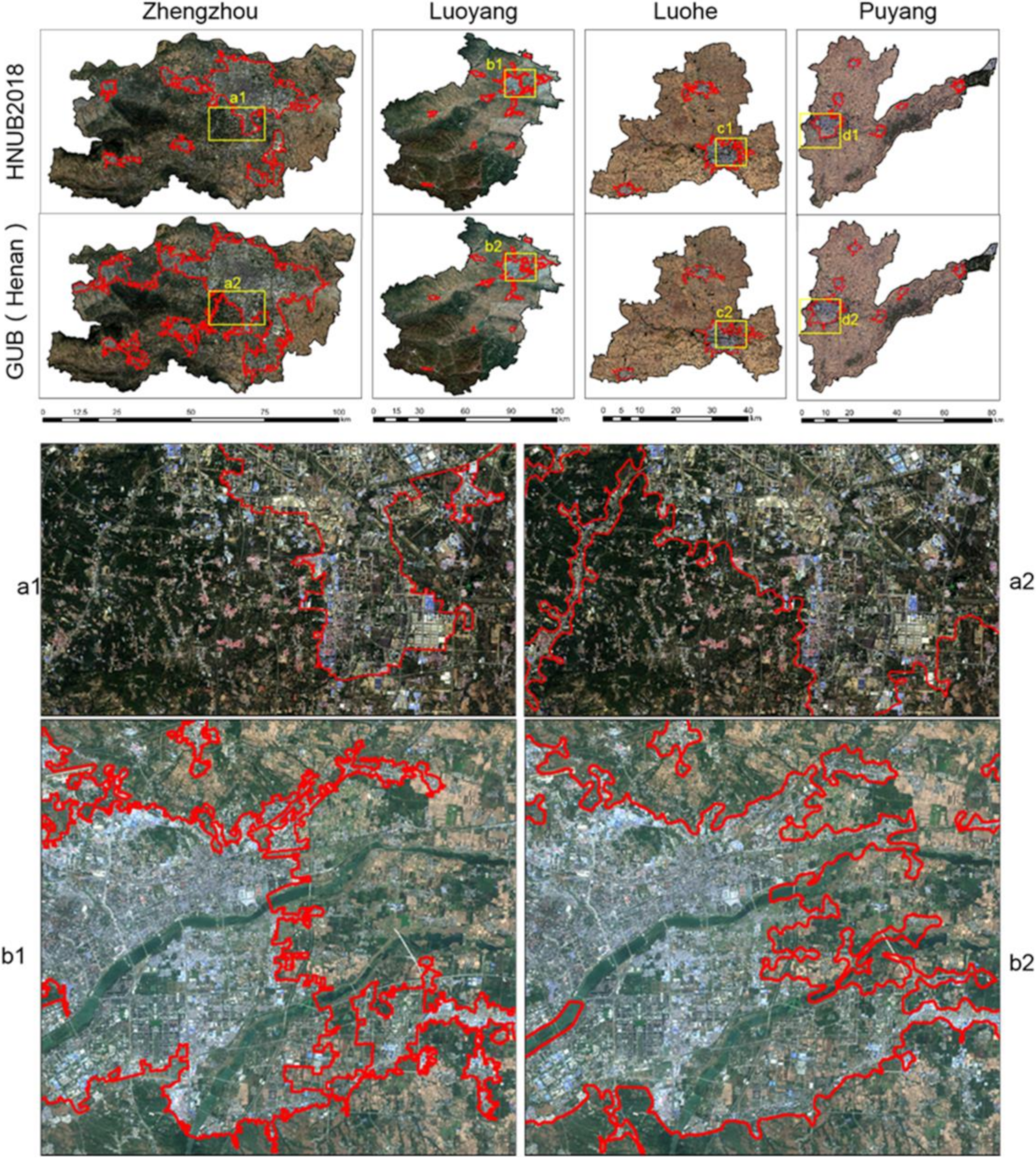
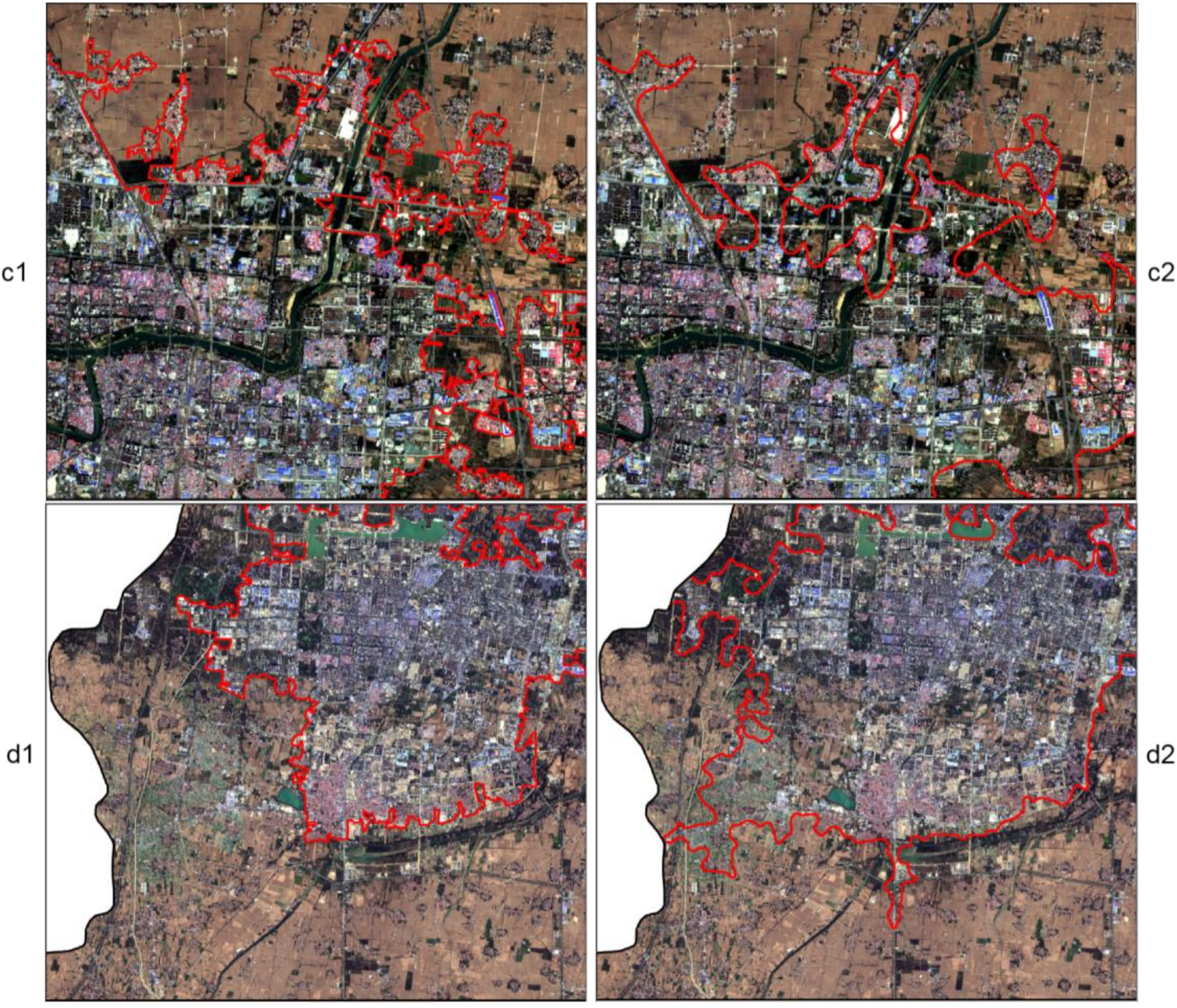
| Image Name | Phase | Resolution (m) |
|---|---|---|
| T49SGA_20180930T030541_TCI.jp2 | 30 September 2018 | 10 |
| T49SGV_20180930T030541_TCI.jp2 | 30 September 2018 | 10 |
| T50SKE_20180930T030541_TCI.jp2 | 30 September 2018 | 10 |
| T50SKF_20180930T030541_TCI.jp2 | 30 September 2018 | 10 |
| T50SLE_20181010T030631_TCI.jp2 | 10 October 2018 | 10 |
| T50SLF_20181010T030631_TCI.jp2 | 10 October 2018 | 10 |
| T50SME_20180907T025541_TCI.jp2 | 7 September 2018 | 10 |
| T50SMF_20181017T025711_TCI.jp2 | 17 October 2018 | 10 |
| T49SGU_20181010T030631_TCI.jp2 | 10 October 2018 | 10 |
| T50SKD_20181010T030631_TCI.jp2 | 10 October 2018 | 10 |
| T49SFU_20181010T030631_TCI.jp2 | 10 October 2018 | 10 |
| T49SFV_20180930T030541_TCI.jp2 | 30 September 2018 | 10 |
| T49SGU_20180930T030541_TCI.jp2 | 30 September 2018 | 10 |
| T49SEU_20181003T031541_TCI.jp2 | 3 October 2018 | 10 |
| T49SEV_20181003T031541_TCI.jp2 | 3 October 2018 | 10 |
| T49SFU_20180928T031539_TCI.jp2 | 28 September 2018 | 10 |
| T49SFV_20180928T031539_TCI.jp2 | 28 September 2018 | 10 |
| T49SET_20181028T031829_TCI.jp2 | 28 October 2018 | 10 |
| T49SFT_20181010T030631_TCI.jp2 | 10 October 2018 | 10 |
| T49SDT_20181003T031541_TCI.jp2 | 3 October 2018 | 10 |
| T49SDU_20181003T031541_TCI.jp2 | 3 October 2018 | 10 |
| T49SGT_20181010T030631_TCI.jp2 | 10 October 2018 | 10 |
| T49SGR_20181005T030549_TCI.jp2 | 5 October 2018 | 10 |
| T49SGS_20181005T030549_TCI.jp2 | 5 October 2018 | 10 |
| T49SGS_20181010T030631_TCI.jp2 | 10 October 2018 | 10 |
| T50RKV_20181012T025639_TCI.jp2 | 12 October 2018 | 10 |
| T50RLV_20181101T025839_TCI.jp2 | 1 November 2018 | 10 |
| T50SKA_20181101T025839_TCI.jp2 | 1 November 2018 | 10 |
| T50SKB_20181010T030631_TCI.jp2 | 10 October 2018 | 10 |
| T50SLA_20181012T025639_TCI.jp2 | 12 October 2018 | 10 |
| T50SLB_20181012T025639_TCI.jp2 | 12 October 2018 | 10 |
| T49SFS_20181005T030549_TCI.jp2 | 5 October 2018 | 10 |
| T50SKC_20180930T030541_TCI.jp2 | 30 September 2018 | 10 |
| T49SDS_20181102T031901_TCI.jp2 | 2 November 2018 | 10 |
| T49SDT_20180928T031539_TCI.jp2 | 28 September 2018 | 10 |
| T49SES_20181102T031901_TCI.jp2 | 2 November 2018 | 10 |
| T49SFR_20181010T030631_TCI.jp2 | 10 October 2018 | 10 |
| T49SFU_20181005T030549_TCI.jp2 | 5 October 2018 | 10 |
| T49SGT_20181005T030549_TCI.jp2 | 5 October 2018 | 10 |
| T49SGU_20181005T030549_TCI.jp2 | 5 October 2018 | 10 |
| T50SKC_20181010T030631_TCI.jp2 | 10 October 2018 | 10 |
| T50SLD_20181012T025639_TCI.jp2 | 12 October 2018 | 10 |
| T50SMC_20181027T025811_TCI.jp2 | 27 October 2018 | 10 |
| T50SMD_20181027T025811_TCI.jp2 | 27 October 2018 | 10 |
| T50SLC_20181027T025811_TCI.jp2 | 27 October 2018 | 10 |
| Serial Number | Data Name | Data Type | Phase | Range |
|---|---|---|---|---|
| 1 | Provincial Administrative Region Boundary | Vector polygon data | 2018 | Henan Province |
| 2 | Municipal Administrative Region Boundary | Vector polygon data | 2018 | Henan Province |
| 3 | Resident of prefecture level municipal government | Vector point data | 2018 | Henan Province |
| 4 | Resident of district and county government | Vector point data | 2018 | Henan Province |
| Division Type | |||||||||
|---|---|---|---|---|---|---|---|---|---|
| HNUB2018 | GUB (Henan) | ||||||||
| Urban | Nonurban | Total | UA | Urban | Nonurban | Total | UA | ||
| Verification type | Urban | 1229 | 20 | 1249 | 98.4% | 1030 | 352 | 1382 | 74.53% |
| Nonurban | 151 | 980 | 1131 | 86.65% | 43 | 955 | 998 | 95.69% | |
| Total | 1380 | 1000 | 2380 | — | 1073 | 1307 | 2380 | — | |
| PA | 89.06% | 98.00% | — | — | 95.99% | 73.07% | — | — | |
| OA | 92.82% | 83.40% | |||||||
| Kappa | 0.8553 | 0.6732 | |||||||
| LINKnet | FPN | U-Net | |||||||
|---|---|---|---|---|---|---|---|---|---|
| Accuracy | F1-Score | m-Iou | Accuracy | F1-Score | m-Iou | Accuracy | F1-Score | m-Iou | |
| Jiyuan | 0.981 | 0.990 | 0.748 | 0.980 | 0.989 | 0.771 | 0.982 | 0.991 | 0.779 |
| Jiaozuo | 0.822 | 0.894 | 0.554 | 0.933 | 0.963 | 0.721 | 0.891 | 0.937 | 0.641 |
| Kaifeng | 0.849 | 0.915 | 0.520 | 0.961 | 0.979 | 0.719 | 0.939 | 0.967 | 0.653 |
| Luoyang | 0.981 | 0.990 | 0.732 | 0.982 | 0.991 | 0.738 | 0.976 | 0.988 | 0.686 |
| Pingdingshan | 0.959 | 0.978 | 0.682 | 0.973 | 0.986 | 0.729 | 0.957 | 0.977 | 0.666 |
| Puyang | 0.962 | 0.980 | 0.687 | 0.982 | 0.991 | 0.772 | 0.985 | 0.992 | 0.796 |
| Sanmenxia | 0.995 | 0.997 | 0.772 | 0.995 | 0.997 | 0.735 | 0.992 | 0.996 | 0.685 |
| Shangqiu | 0.866 | 0.926 | 0.499 | 0.964 | 0.981 | 0.664 | 0.960 | 0.979 | 0.649 |
| XuChang | 0.658 | 0.777 | 0.394 | 0.895 | 0.941 | 0.627 | 0.803 | 0.883 | 0.511 |
| Xinxiang | 0.875 | 0.929 | 0.579 | 0.963 | 0.980 | 0.761 | 0.943 | 0.969 | 0.699 |
| Xinyang | 0.995 | 0.997 | 0.799 | 0.996 | 0.997 | 0.817 | 0.995 | 0.997 | 0.804 |
| Zhumadian | 0.948 | 0.972 | 0.605 | 0.958 | 0.978 | 0.628 | 0.972 | 0.985 | 0.676 |
| average | 0.908 | 0.946 | 0.631 | 0.965 | 0.981 | 0.724 | 0.950 | 0.972 | 0.687 |
| 0 | 1 | 2 | 3 | 4 | 5 | 6 | 7 | 8 | 9 | |
|---|---|---|---|---|---|---|---|---|---|---|
| Accuracy | 0.939 | 0.956 | 0.876 | 0.942 | 0.863 | 0.909 | 0.889 | 0.938 | 0.892 | 0.909 |
| F1-score | 0.963 | 0.973 | 0.931 | 0.969 | 0.924 | 0.951 | 0.939 | 0.967 | 0.941 | 0.951 |
Publisher’s Note: MDPI stays neutral with regard to jurisdictional claims in published maps and institutional affiliations. |
© 2022 by the authors. Licensee MDPI, Basel, Switzerland. This article is an open access article distributed under the terms and conditions of the Creative Commons Attribution (CC BY) license (https://creativecommons.org/licenses/by/4.0/).
Share and Cite
Li, X.; Zheng, K.; Qin, F.; Wang, H.; Zhao, C. Deriving Urban Boundaries of Henan Province, China, Based on Sentinel-2 and Deep Learning Methods. Remote Sens. 2022, 14, 3752. https://doi.org/10.3390/rs14153752
Li X, Zheng K, Qin F, Wang H, Zhao C. Deriving Urban Boundaries of Henan Province, China, Based on Sentinel-2 and Deep Learning Methods. Remote Sensing. 2022; 14(15):3752. https://doi.org/10.3390/rs14153752
Chicago/Turabian StyleLi, Xiaojia, Kang Zheng, Fen Qin, Haiying Wang, and Chunhong Zhao. 2022. "Deriving Urban Boundaries of Henan Province, China, Based on Sentinel-2 and Deep Learning Methods" Remote Sensing 14, no. 15: 3752. https://doi.org/10.3390/rs14153752
APA StyleLi, X., Zheng, K., Qin, F., Wang, H., & Zhao, C. (2022). Deriving Urban Boundaries of Henan Province, China, Based on Sentinel-2 and Deep Learning Methods. Remote Sensing, 14(15), 3752. https://doi.org/10.3390/rs14153752







